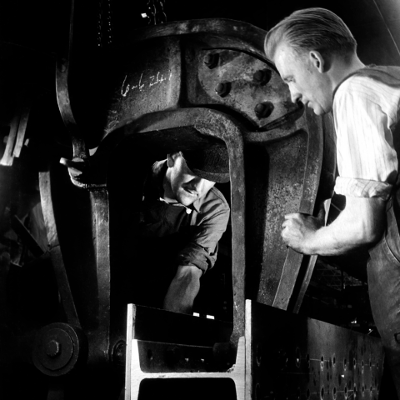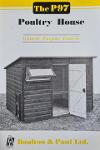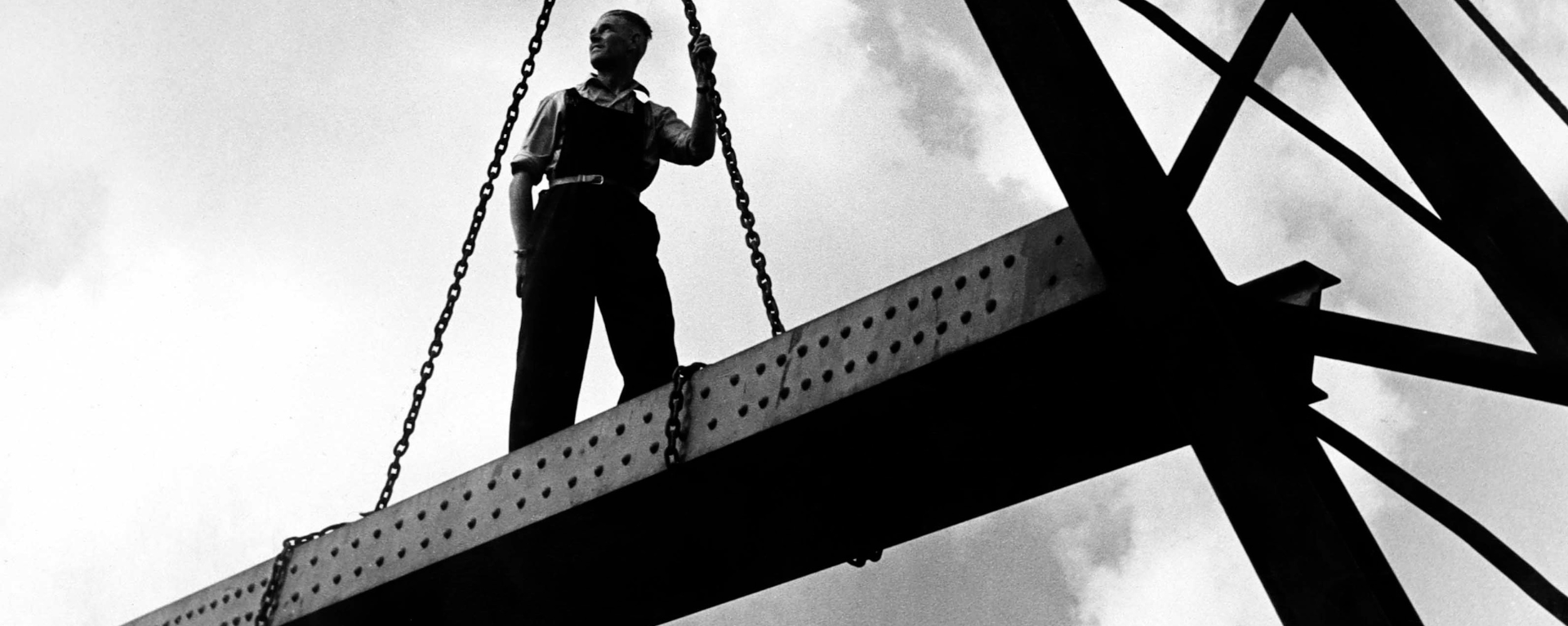Riverside Works

The history of Boulton and Paul can be traced to 1797, when ironmonger William Moore opened his first business on London Street in Norwich.
Moore died in 1839, leaving Moore and Barnard, Ironmongers and Stove Grate Manufacturers in the hands of his business partner John Barnard, who in turn took a young William Staples Boulton into partnership as the business expanded. A new apprentice, Joseph John Dawson Paul, was recruited in 1853 and eventually made partner and in 1874 the business became Boulton and Paul.
In the 19th century the firm made a wide range of products including domestic and agricultural equipment, such as:
- Fencing
- Kitchen ranges
- Hot water systems
- Wire netting
By the early 20th century, the firm had become known internationally for prefabricated wooden and metal buildings, such as barns, bungalows and sheds.
In the slump after the First World War the decision was made to focus the company's efforts on three key areas at a new purpose-built factory on the River Wensum, known as the Riverside Works. These areas were wire netting, constructional engineering and woodworking.
Wire netting
Chain link fencing and galvanised wire netting were some of Boulton and Paul's most successful products. Production began in 1868, following the invention of the first wire netting machine in 1844 by fellow Norwich engineer, Charles Barnard. It used the principles of fabric weaving looms to create the metal netting. You can see Barnard's original wire netting machine on display at The Museum of Norwich. Boulton and Paul were soon exporting thousands of miles of material, especially to Australia. In 1905 alone they made 7,614 miles of wire netting.
At the outbreak of the First World War the wire-weaving looms were moved out of the works in Rose Lane works to make way for aircraft production. They were later relocated to the Riverside Works along with the constructional steel and woodworking sections. The Second World War saw them branch into new areas of war work, including tracking for emergency aircraft runways.
In the post-war period the wire netting section had become vulnerable due to shortages of steel and increased competition. Previously, Boulton and Paul had bought in wire for fabrication but now they expanded their operation to produce their own wire from steel rod. Chain link fencing was in demand as a replacement for traditional iron railings which had been melted down to make armaments.
In 1948 the wire netting operation expanded into South Africa, although this venture eventually proved unsuccessful. In 1955, Bolton and Paul acquired Galvo (Wire Netting) Ltd in Staffordshire. The company ended the decade having doubled their share of the home trade in wire netting.
Constructional engineering
In 1905 the company made the decision to add steel construction to their portfolio, seeing that it was beginning to rival the traditional materials of wood and iron. They initially produced light structures for agricultural purposes. During the First World War the department prospered, making aircraft hangers and buildings for arsenals and dockyards, and by the end of the war, steel was one of Boulton and Paul's key products.
Shortages of steel and seasoned timber after the Second World War hindered the firm's return to manufacturing domestic and agricultural prefabricated buildings, which resulted in a decline of income. In 1948 a controlling interest in the company was acquired by Anglo-Transvaal Industries. This injection of significant funds enabled Boulton and Paul to modernise its production and expand international sales, particularly to South Africa and Australia.
Boulton and Paul hired a new works manager to the constructional engineering department that year with a view to improving both output and efficiency after the war. The new manager, Lionel E. Measures devised an automatic process for fabricating steel which eliminated the heavy manual work involved in the older processes. In the drawing office a computer was installed to undertake complicated calculations, saving time and reducing the need for skilled draughtsmen.
Woodworking
At the end of the 19th century, Boulton and Paul began to manufacture timber and sectional buildings for a variety of uses, from pig huts and poultry houses to sports pavilions and portable bungalows. These products became a staple of their business and for decades carried their name around the world.

The Boer War brought a £100,000 contract for officers' bungalows for a convalescent camp in Hampshire, and large quantities of pre-fabricated bungalows were exported in the wake of earthquakes in Jamaica and Italy. Later, during the First World War, the woodworking department produced sectional buildings for military camps. The Second World War saw the manufacture of huge boxes for transporting aircrafts, which could then be repurposed as offices or living quarters.
In 1942 the firm increased their capacity by acquiring the Midland Woodworking Company at Melton Mowbray as a subsidiary. Like Boulton and Paul, Midland Woodworking specialised in household joinery, allowing the firm to expand their production of window frames, doors and kitchen fittings.
After the war, production of sectional buildings resumed, and in 1952 the company completed its largest post-war export order for 95 prefabricated schools for the Government of Queensland, Australia. Timber structures were also made for the British North Greenland Expedition and for the South Polar Expedition led by Sir Vivian Fuchs.
In 1954 the factory was expanded to cater for the higher demand for household joinery created by the housing boom. Four years later it was decided that the woodworking section would concentrate on this area. The manufacture of timber and sectional buildings was discontinued in 1958.












